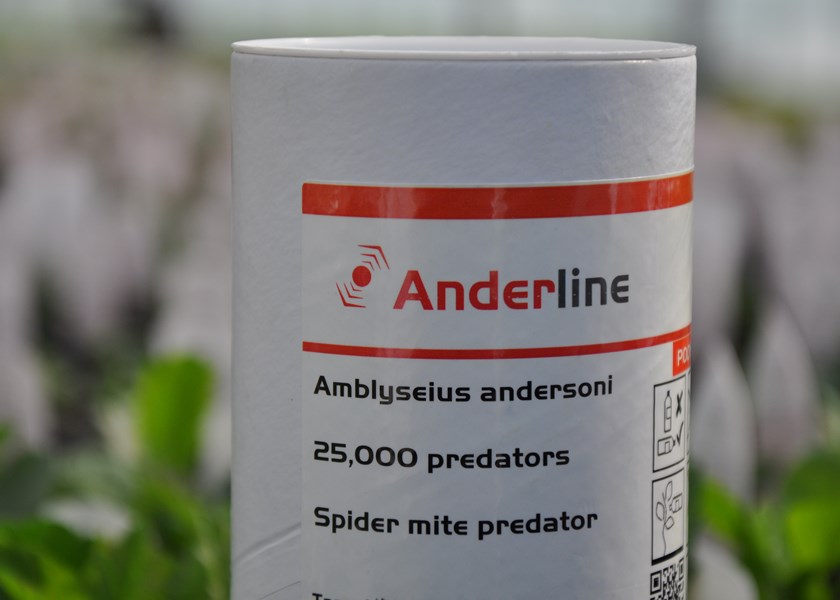Anderline Aa (Amblyseius andersoni): an effective preventative control for spider mites, rust mites, gall mites and young thrips
Amblyseius andersoni is a predatory mite targeting several crop pests; feeding on mite eggs, juveniles and adults with high efficacy as a preventative and early-stage curative method of control.
As a generalist predator, A. andersoni has a preference for various mite species including, two-spotted spider mites; Tetranychus urticae, citrus spider mite; Panonychus citri, fruit tree spider mite; Panonychus ulmi, various gall mites including, fuchsia gall mite and pear blister mite being the most common targets, rust mites, Eriophyid mites and they will also feed on young thrips larvae.
Arthropod prey makes up the preferred diet of A. andersoni however, during periods of low pest populations the species can survive on fungal spores, pollens and plant exudates awaiting the return of arthropod prey.
A .andersoni is active within temperature ranges between 6-40˚C / 43-104°F, a broader temperature range compared to Phytoseiulus persimilis and Amblyseius californicus and better suited to the changeable UK climate. The combination of changeable diet during periods of low pest populations and lower active temperature ranges makes A. andersoni an ideal species for early preventative control of pests.
A. andersoni are polyphagous, meaning the mites can establish on a wide variety of plants compared to species with specialised diets such as Phytoseiulus persimilis which feeds only on spider mites.
Early establishment in the growing season of A. andersoni followed by a later application of P. persimilis when average temperatures are above 14°C /57°F is highly effective at targeting larger infestations of spider mites. A. andersoni can enter diapause in the early autumn and overwinter where the pest mites seek refuge in cracks and crevices, emerging in late winter when average temperatures and light levels increase.
The overwintering ability of A. andersoni promotes carryover of this species into the following year and depending on the crop and surrounding environment allows the predator to migrate back into the crop from natural refuge sites. This establishes A. andersoni in the crop at the increase of average daily temperatures in late winter, creating a base of crop protection targeting small pest colonies before they can take hold in the crop.
Fargro offers a range of pack designs and sizes to suit your growing system:
- FGMIW: Gemini sachet 100 sachets/unit, 250 mites per packet
- FGMJA: Bugline 6x100 m strips, 125 mites per packet
- (1 in 6 sachets filled)
- FGMZX: Mini sachet 200 sachets/unit, 125 mites per packet
- FGMIX: 5lt bag, 125,000 mites per packet
- FGMIY: 1lt Tube, 25,000 mites per pack
- FGMIZ: Sachet on stick 200 sachet/unit, 125 mites per pack


Anderline AA (Amblyseius andersoni) Tube of 25,000
£52.96 Ex VAT